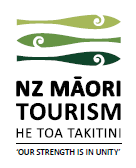The 2018 World Indigenous Tourism Summit workshops encouraged participants to share the ways indigenous tourism businesses can help protect and enhance indigenous cultures while pursuing opportunities. It was agreed that balance was not enough and that communities should be seeking situations where they can improve their commerce and enhance their culture simultaneously.
WIT Summit Blog WIT Summit website
This can be achieved by ensuring the business of indigenous tourism fuels culture.
It was identified that a high-performing indigenous tourism operation, with culture at its core, exhibits a number of key traits. Eight traits, with culture as the anchor. These traits are critical to their success, and the value they provide to their people and their customers.
- Culture as the anchor
- Lead as servants
- Invest in people
- Business discipline
- Mind-set matter
- In the customers shoes
- Connect to collaborate
- Continuous improvement and collaboration
An indigenous tourism operator may use this “growth for goodness” tool, to examine and challenge their own traits. Leveraging these insights is a key opportunity for indigenous tourism operators around the world, to share and look to examples of excellence, to improve their current business models and processes in a collaborative and meaningful way.


